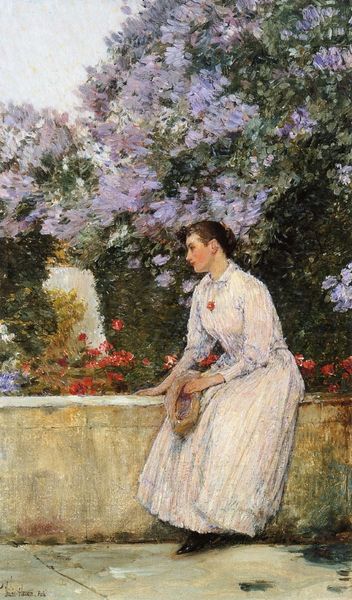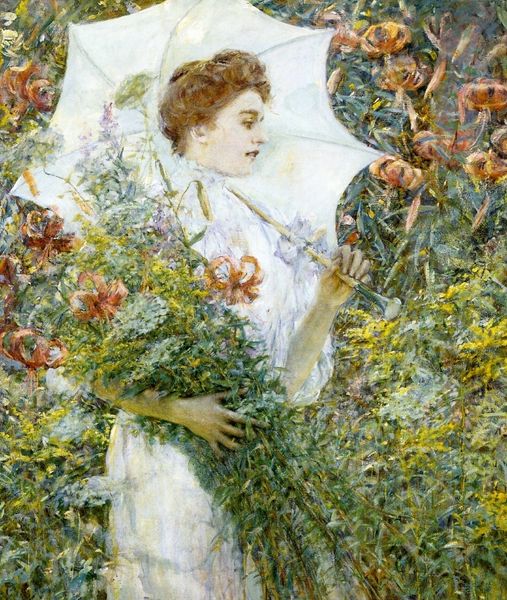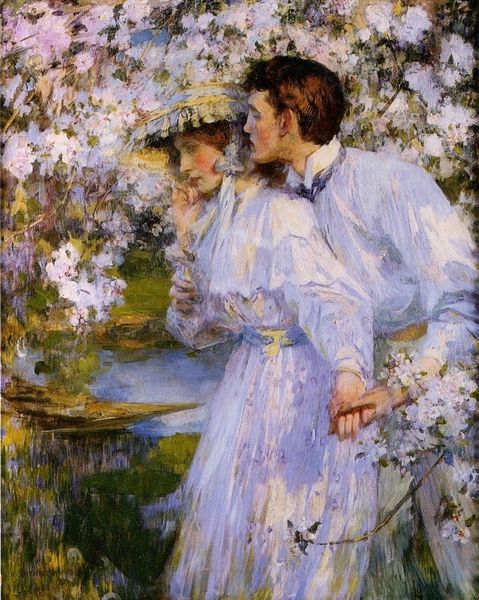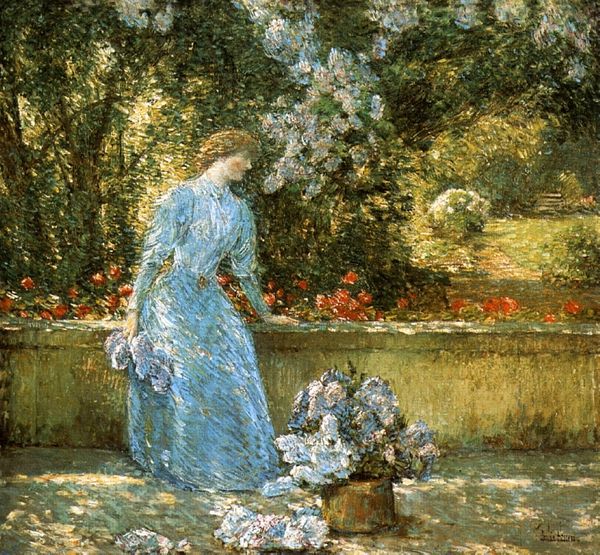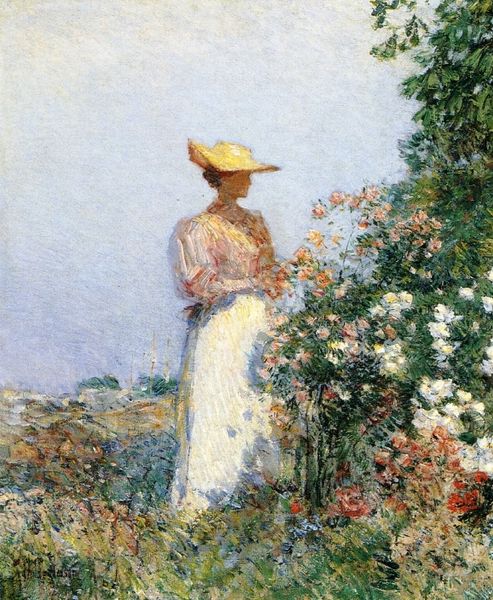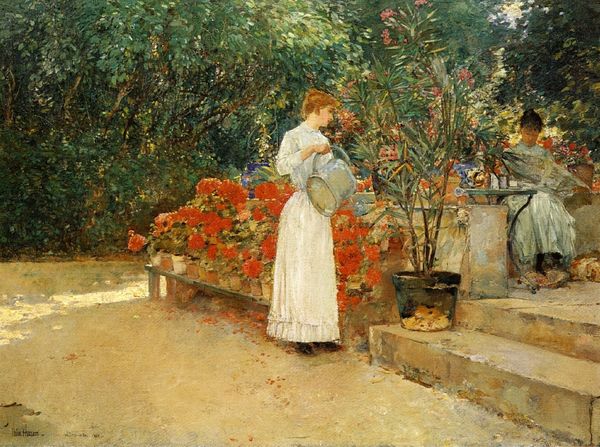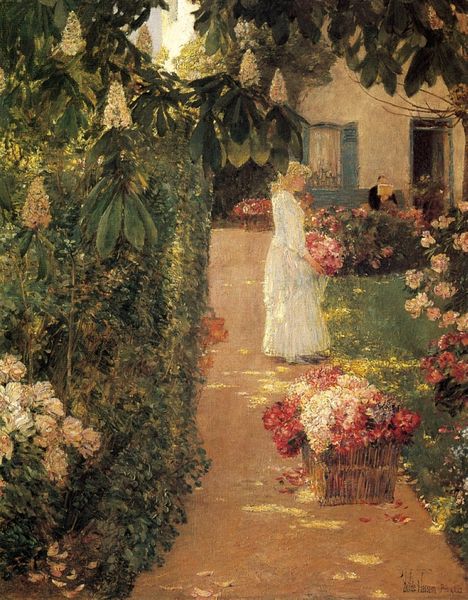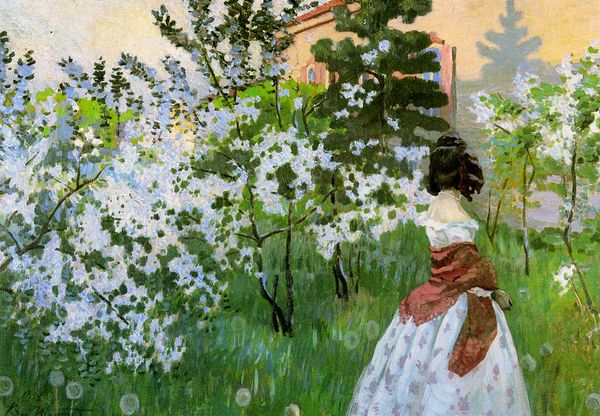
Copyright: Public domain
Art Historian: Alright, let's delve into this work, and the world it reflects! Editor: We're looking at Childe Hassam's "Mrs. Hassam in the Garden" from 1896. It's an oil painting. The first thing that strikes me is how dreamlike it feels, almost like a memory, because of the soft light and blurry edges. What draws your eye when you look at this piece? Art Historian: The image is absolutely steeped in privilege. Consider the context: Hassam, a white American male painter at the height of the Gilded Age, portraying his wife in their garden. We must recognize who gets to inhabit these spaces of leisure. This idealized vision, dripping with lilac and leisure, reinforces certain gendered roles, no? The woman is the decorative object, literally blending with the flowers. Editor: That's an interesting perspective. I was just thinking about the technique, the Impressionistic style, but you’re right, it’s a very specific viewpoint. Do you think it's fair to apply modern critiques to a work from so long ago? Art Historian: It’s essential. Art doesn't exist in a vacuum. We examine how it functions as a historical document that both reflects and perpetuates power dynamics. We have to question whose stories are being told and whose are being excluded. Doesn't it make you wonder about the labor required to maintain such a lush garden, likely performed by people whose stories are absent here? Editor: I see what you mean. Thinking about the people *not* in the painting opens up a whole new perspective on it. It makes you consider what's just outside the frame. Art Historian: Exactly! That's how we can truly engage with art—by constantly interrogating its silences and its affirmations. Considering all those issues helps one read any painting so much more deeply, I find.
Comments
No comments
Be the first to comment and join the conversation on the ultimate creative platform.
